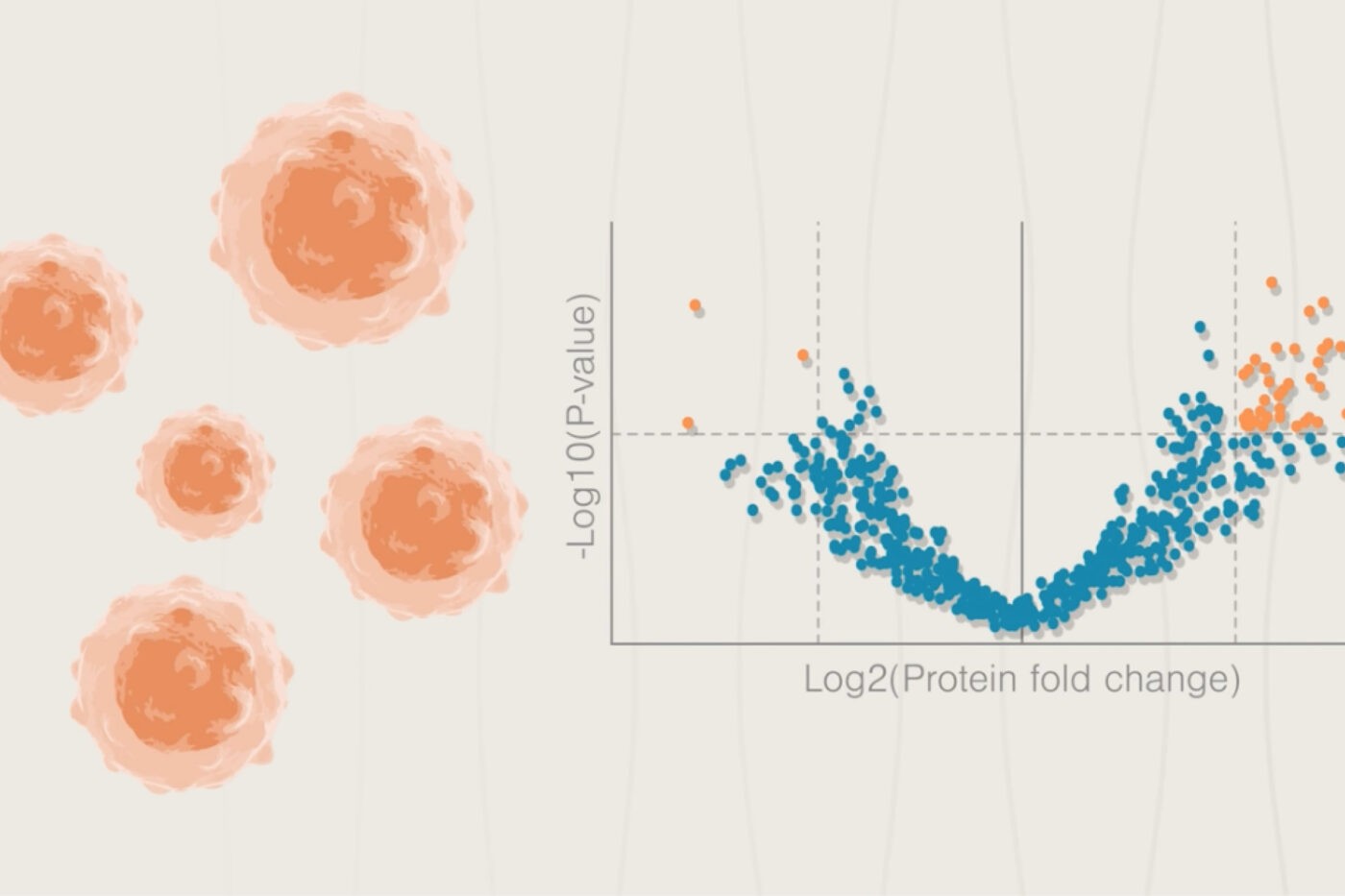
Applications of proteomics in agriculture – Plant stress tolerance

Tyler Ford
July 18, 2023

Climate change exposes plants to extreme environmental stresses that can harm ecosystems, decrease crop yields, and threaten food security. Plants have natural defenses against many stresses, but often cannot adapt quickly enough in times of rapid change.
These defenses generally leverage the power of a variety of proteins. So for researchers studying ways to improve plant stress defenses, proteomics, the study of all proteins in a biological entity, the proteome, provides powerful tools.
In part two of our Applications of proteomics in agriculture series, we’re looking at proteomics studies that reveal how proteins help plants deal with stress and may ultimately protect crops. Proteomics has emerged as a valuable tool to study the complex molecular networks that underlie plant stress responses. Proteomic techniques can be applied to identify plant proteins that are expressed differentially or modified in response to various stresses, providing insights into the molecular mechanisms of stress adaptation and tolerance in plants.
Looking for proteomic differences between plants that tolerate a given stress well and those that don’t can reveal which proteins are important for stress tolerance. Researchers can investigate these proteins to some extent with current proteomic analysis tools, but existing technologies often cannot see all the proteins in a sample, and may be difficult to use. To understand the proteins that protect plants, researchers need to be able to interrogate substantively all of the proteome, every time. Tools like the Nautilus Proteome Analysis Platform are designed to offer that kind of comprehensive, reproducible analysis.
With proteome-level information in hand, scientists can breed plant lineages with better protein defense mechanisms and create more resilient crops.
Proteomics could help save plants from droughts
Plants are exposed to a wide range of environmental stresses, such as drought, high salinity, and heat, which can negatively impact crop production. As climate change causes more unpredictable conditions, improving agriculture by growing plants that can survive these conditions is vital.
Maize, also known as corn, is the third-most consumed cereal in the world and is an important component of livestock feed. No matter what you eat, maize is probably important to your diet in some way. Unfortunately, like most staple crops today, maize is threatened by increasing droughts and other environmental stressors. Proteomics may offer solutions that protect crops like maize from drought.
In a 2022 proteomic analysis in Plant Physiology and Biochemistry, researchers profiled different maize proteomes to identify differences in protein abundance between drought-sensitive and drought-tolerant varieties. Drought tolerance in plants is based on numerous biological pathways working together to help plants survive difficult conditions. For example, this study found that drought-tolerant plants relied on changes to protein abundance in pathways relating to water transport, photosynthesis, and DNA packaging. The researchers also found that pre-exposure to mild drought could help prepare plants for more severe drought later on.
In a recent article in Biotechnology & Biotechnological Equipment, researchers focused on a stage of maize development when the kernels are stocking up on nutrients. They found 1,655 proteins whose abundances differed between drought sensitive and drought tolerant maize. Improved drought tolerance came from changes in proteins related to stress defense and a decrease in redundant proteins, as well as the up-regulation of some proteins with unknown functions.
These studies offer insights into which proteins are effective for drought response. Knowledge of these proteins may help plant breeders make new varieties of maize that are even more resilient when water is scarce.
Looking to the proteome to survive changes in salinity
Drought isn’t the only challenge that plants face from their environment. Shifts in weather (like precipitation and temperature) and human activity can increase soil salt concentrations to levels that are toxic for plants. Understanding how plants cope with increased salt stress and developing crops with improved salt tolerance are major priorities in crop protection. Proteomics may help researchers achieve these goals.
For example, chickpeas are a staple crop around the world. Today, areas where chickpeas are farmed including the Indian subcontinent, northern Africa, and the Middle East are facing pressures from saline soils. To learn how chickpeas are coping, scientists in Iran and Australia compared the proteomes of salt-tolerant and salt-susceptible chickpeas, identifying 364 candidate proteins that contribute to salt tolerance. Writing in BMC Plant Biology, they described coordinated upregulation of core pathways involved in photosynthesis and protein metabolism, in addition to stress response pathways related to photorespiration and oxidative stress. These and similar studies may point researchers to the appropriate pathways to modify for the creation of salt tolerant crops.
Finding new genetic resources using proteomics
Through the process of domestication, modern crops have lost many of the traits that helped their wild ancestors resist pests, diseases, and environmental stresses. To restore some of these missing traits, plant breeders often look to a crop’s wild relatives. In fact, breeders have been crossing modern crop varieties with wild relatives to try and recapture some of the genes that were lost through domestication since the middle of the 20th century. Similar efforts could leverage proteomics to identify proteins that make wild varieties more robust and enable scientists to create modern crops that are more resilient to environmental stresses.
As an example, consider cassava. Cassava is an important crop because it can grow in poor soils with minimal inputs, and it feeds millions of people in tropical America, Africa, and Asia. Researchers used proteomics to compare cultivated cassava with a wild relative and identified 479 proteins in leaves and roots that help explain differences in plant structure, photosynthesis, and starch accumulation. These proteins are candidates for further research into how to increase cassava yield and improve food security in more than 100 countries.
New tools for proteomics applications in agriculture
Proteomics tools like the Nautilus Proteome Analysis Platform could greatly speed up the process of assessing the proteomes of stress-tolerant plants. Identifying exactly which proteins respond to stress involves searching through potentially millions of proteins in a single sample.
Rapid-throughput and integrated workflows that make comprehensive proteomics studies more accessible will be particularly important as researchers work to compare the proteomes of many different wild and agriculturally important plants. With next-generation proteomics technologies capable of reliably detecting full proteomes, researchers can more efficiently find and adapt plant defenses from one species to another.
Next up: In part three in our Applications of proteomics in agriculture series, we’ll look at agricultural disease resistance.
Listen to the Translating Proteomics podcast for a fascinating discussion of the applications of proteomics
MORE ARTICLES
